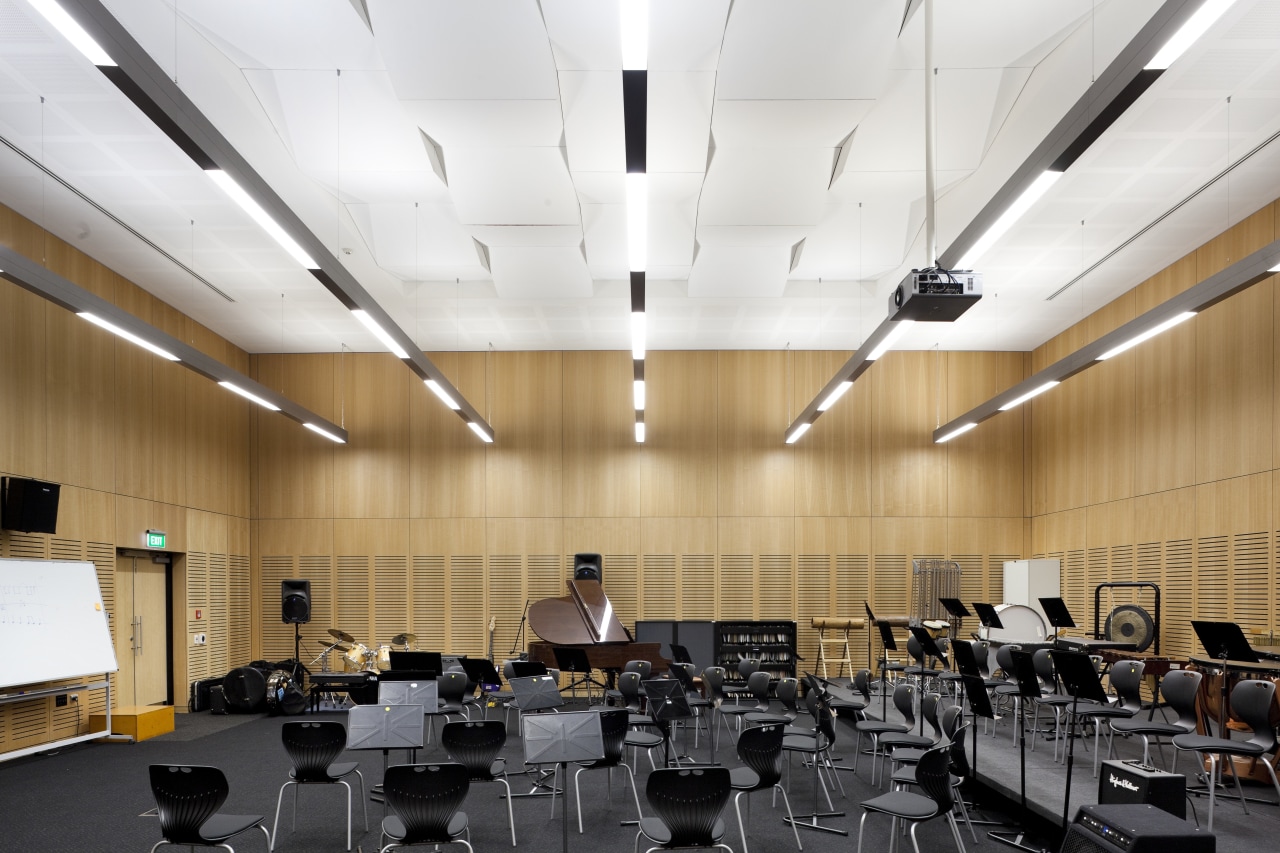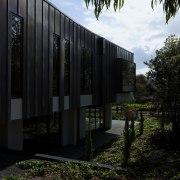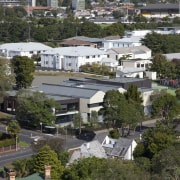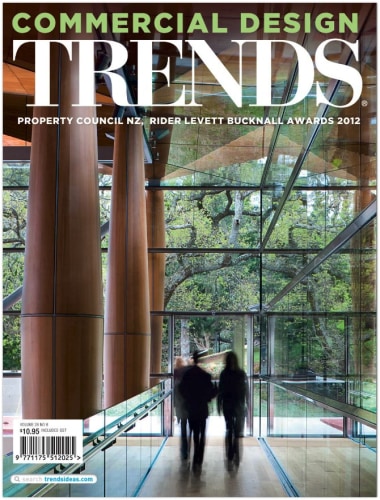In concert
A number of architectural approaches by Architectus came together to create St Cuthbert's Performing Arts Centre
A well-respected academic institution is an essential weft in the fabric of society preparing its students for the wide world and the workforce. However, as well as interweaving in cultural terms, a forward-looking school will ensure its physical presence contributes to the surroundings.
Prior to running a competition for design ideas for its Performing Arts Centre, St Cuthbert's College had adequate music facilities, but drama had been taught in standard classrooms. The new centre would bring the two disciplines together.
Architectus, with project director Carsten Auer, won the day, presenting a design that met all musical and thespian needs for the students and responded architecturally to the existing school buildings and to the rhythm and forms of the houses on the street sides of the campus.
The corner site a merger of three residential lots is open to busy Market Road on one side and sleepy Wapiti Avenue on the other.
Both the building forms and choice of materials played their part in ensuring the Performing Arts Centre fitted into this urban character, says Auer.
"Firstly, we designed the Centre as a series of building elements anchored by a double-height atrium. The various forms are pushed forward and back, creating positive and negative spaces much like disparate house forms on a suburban street."
"Further to this, the central gabled roof forms echo suburban roofs and the material choices sandstone, copper, zinc and plaster are also sympathetic to a residential build vernacular," says Auer.
"At the same time as it responds to the street, the Centre connects back to the existing school buildings. Its sandstone surfaces are a nod to the school chapel, in the same finish, and the zinc was chosen for the way that it ages creating a graceful patina over time that will reflect the established nature of the college."
The St Cuthbert's Performing Arts Centre is as responsive to student needs as it is to the cityscape. Education today increasingly favours open-plan teaching but the function of the Centre required individual teaching areas, each one acoustically separated from the next.
To achieve a communal feel, Architectus created a gathering space the large, naturally lit atrium. Similarly, broad corridors and stairs were introduced to further encourage the spontaneous interactions that will contribute to the students' social and informal learning.
In general, the music facilities are on the upper level of the two-storey complex, while drama is on the lower. However, some facilities are shared. The drum room is tucked away on the lower level.
"Despite the requirement for compartmentalised classroom layouts, the fit-out and placement of services reinstate a level of flexibility," says Auer. "Power sources are positioned in floor boxes where they can be accessed from all areas of the rooms and audiovisual equipment is situated where it can project onto a number of walls effectively utilising wall space as teaching surfaces."
While the arrangement and massing of the Performing Arts Centre responds to the suburban environment on the outside, the distinctive forms and materials are continued on the inside acting as wayfaring elements for students. For example, an architectural slot on the central gabled form is continued as a feature in the two-storey atrium. In this way, the Centre provides an orchestrated response to the needs of site, students and staff.
Credit list
St Cuthberts Performing Arts Centre Location
Construction
Structural engineering
Quantity surveyor
Landscaping
Cladding
Hardware
Blinds
Reception furniture, office furniture and chairs
Signage
Architect
Civil engineer
Mechanical and electrical engineer
Earthworks
Fire consultant
Roofing
Handrails
Veneers
Security system
Lift
Story by: Charles Moxham
Home kitchen bathroom commercial design
Classic looks, contemporary efficiency
Diving into nature
Personality plus















